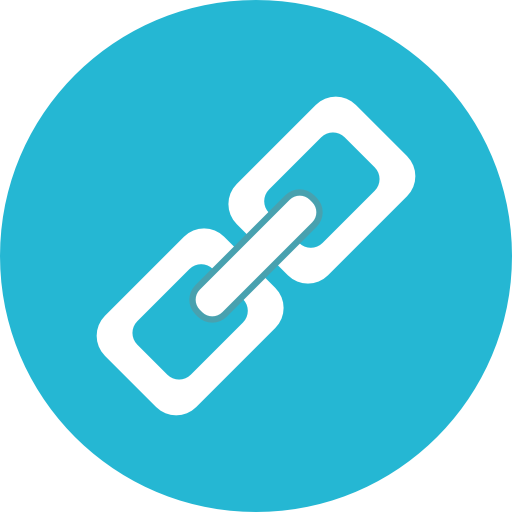دوره جامع فریمورک GTK
GTK (GIMP Toolkit) یک فریمورک متنباز و چند پلتفرمی (cross-platform) برای ایجاد رابطهای کاربری گرافیکی (GUI) است که عمدتاً در محیطهای لینوکس استفاده میشود اما در ویندوز و macOS نیز پشتیبانی میشود.
GTK مجموعهای قوی از کتابخانهها و ابزارها برای ساخت برنامههای دسکتاپ مدرن، واکنشگرا و با ویژگیهای غنی را فراهم میکند.
GTK به طور گسترده در توسعه برنامههای لینوکس محبوب و محیطهای دسکتاپ مانند GNOME استفاده میشود، و آن را به یک مهارت حیاتی برای توسعهدهندگانی تبدیل میکند که در اکوسیستمهای منبع باز کار میکنند یا پلتفرمهای مبتنی بر لینوکس را هدف قرار میدهند.
یادگیری GTK برای توسعهدهندگان نرمافزاری که به دنبال ساخت برنامههای کاربردی چند پلتفرمی یا بومی لینوکس هستند، ضروری است، زیرا دارای انعطافپذیری و پشتیبانی گسترده جامعه توسعهدهندگان آن است.
یک معلم خصوصی میتواند با ارائه راهنمایی ساختاریافته، مثالهای عملی و پروژههای واقعی، این فرآیند را تسریع بخشد، و به فراگیران GTK کمک میکند تا به سرعت GTK API را درک کنند، طراحی مبتنی بر ویجت آن را درک کنند، و برنامههای کاربردی حرفهای را که استانداردهای صنعت را برآورده میکنند، بسازند.
Chapter 1: Introduction to GTK Framework
- Lesson 1: What is GTK?
- Lesson 2: History and Evolution of GTK
- Lesson 3: Applications and Use Cases of GTK
- Lesson 4: Installation and Setting Up GTK (Windows, Linux, macOS)
- Lesson 5: Overview of GTK Development Tools
Chapter 2: Basics of GTK Programming
- Lesson 1: GTK Project Structure and File Types
- Lesson 2: Writing and Running Your First GTK Application
- Lesson 3: Understanding GTK's Event-Driven Architecture
- Lesson 4: GTK Signals and Event Handling
- Lesson 5: Debugging and Error Handling in GTK
Chapter 3: GTK Core Concepts
- Lesson 1: GTK Object System (GObject)
- Lesson 2: Memory Management in GTK
- Lesson 3: GTK Data Types and Structures
- Lesson 4: File Handling and I/O Operations
- Lesson 5: Threading and Concurrency in GTK
Chapter 4: GUI Development with GTK Widgets
- Lesson 1: Understanding GTK Widgets and Containers
- Lesson 2: Working with Buttons, Labels, and Entry Fields
- Lesson 3: Layout Management with Boxes and Grids
- Lesson 4: Dialogs, Message Boxes, and File Choosers
- Lesson 5: Customizing Widgets with CSS and Themes
Chapter 5: Advanced UI Development
- Lesson 1: Creating Custom GTK Widgets
- Lesson 2: Working with GTK Drawing Area for Custom Graphics
- Lesson 3: Drag and Drop Functionality in GTK
- Lesson 4: Internationalization and Localization in GTK
- Lesson 5: Accessibility and High DPI Scaling in GTK
Chapter 6: GTK Model-View Architecture
- Lesson 1: Understanding MVC in GTK Applications
- Lesson 2: Using GTK TreeView and ListStore Models
- Lesson 3: Implementing Custom Models in GTK
- Lesson 4: Sorting and Filtering Data in GTK Views
- Lesson 5: Handling Large Data Sets Efficiently
Chapter 7: GTK Multimedia
- Lesson 1: Playing Audio and Video in GTK Applications
- Lesson 2: Capturing Audio and Video from Devices
- Lesson 3: Working with Images and Image Processing
- Lesson 4: Creating Animations and Transitions
- Lesson 5: Integrating Multimedia Libraries like GStreamer
Chapter 8: GTK Graphics and OpenGL
- Lesson 1: Introduction to Cairo for 2D Graphics
- Lesson 2: Drawing Shapes, Text, and Images with Cairo
- Lesson 3: Integrating OpenGL with GTK
- Lesson 4: Working with Shaders in GTK Applications
- Lesson 5: Creating Interactive 3D Graphics
Chapter 9: Networking in GTK
- Lesson 1: Understanding Network Programming in GTK
- Lesson 2: Sending and Receiving HTTP Requests with libsoup
- Lesson 3: Working with WebSockets in GTK
- Lesson 4: Implementing TCP and UDP Communication
- Lesson 5: Parsing JSON and XML Data in GTK
Chapter 10: Database Integration with GTK
- Lesson 1: Connecting to Databases using libgda
- Lesson 2: Performing CRUD Operations in GTK
- Lesson 3: Using SQLite, MySQL, and PostgreSQL with GTK
- Lesson 4: Implementing Transactions and Error Handling
- Lesson 5: Creating Database-Driven Applications
Chapter 11: GTK Web Technologies
- Lesson 1: Using WebKitGTK for Web Integration
- Lesson 2: Creating Hybrid Web Applications with GTK
- Lesson 3: JavaScript and GTK Interaction
- Lesson 4: WebSockets and REST API in GTK Applications
- Lesson 5: Security Considerations for Web Applications
Chapter 12: Multithreading and Concurrency in GTK
- Lesson 1: Introduction to Multithreading in GTK
- Lesson 2: Using GThreads for Parallel Execution
- Lesson 3: Synchronization and Thread-Safe Programming
- Lesson 4: Managing Worker Threads in GTK Applications
- Lesson 5: Performance Optimization in Multithreaded Applications
Chapter 13: File Handling and Serialization in GTK
- Lesson 1: Reading and Writing Files in GTK
- Lesson 2: Working with Binary and Text Files
- Lesson 3: JSON and XML Serialization
- Lesson 4: Using GSettings for Application Configuration
- Lesson 5: Compressing and Extracting Files in GTK
Chapter 14: Creating Cross-Platform GTK Applications
- Lesson 1: Understanding GTK's Cross-Platform Capabilities
- Lesson 2: Compiling GTK Applications for Windows, Linux, and macOS
- Lesson 3: Deploying GTK Applications on Mobile Platforms
- Lesson 4: Managing Platform-Specific Differences in GTK
- Lesson 5: Optimizing Performance for Mobile and Embedded Devices
Chapter 15: Building and Deploying GTK Applications
- Lesson 1: Compilation and Linking in GTK
- Lesson 2: Using Meson and Autotools for GTK Projects
- Lesson 3: Packaging and Distributing GTK Applications
- Lesson 4: Code Signing and Security Considerations
- Lesson 5: Automating Builds with Continuous Integration
Chapter 16: GTK Test Framework
- Lesson 1: Introduction to Unit Testing in GTK
- Lesson 2: Writing Test Cases with GLib Testing Framework
- Lesson 3: Mocking and Test Automation in GTK
- Lesson 4: Debugging and Profiling GTK Applications
- Lesson 5: Best Practices for Test-Driven Development
Chapter 17: Embedded Development with GTK
- Lesson 1: Introduction to GTK for Embedded Systems
- Lesson 2: Configuring GTK for Raspberry Pi and IoT Devices
- Lesson 3: Performance Optimization for Embedded GTK Applications
- Lesson 4: Using GTK with IoT and Hardware Devices
- Lesson 5: Real-World Embedded Application Development
Chapter 18: Advanced Topics in GTK
- Lesson 1: Performance Profiling and Optimization in GTK
- Lesson 2: Advanced Custom Widget Development
- Lesson 3: Writing High-Performance GTK Applications
- Lesson 4: Integrating Third-Party Libraries in GTK
- Lesson 5: Future Trends and New Features in GTK




